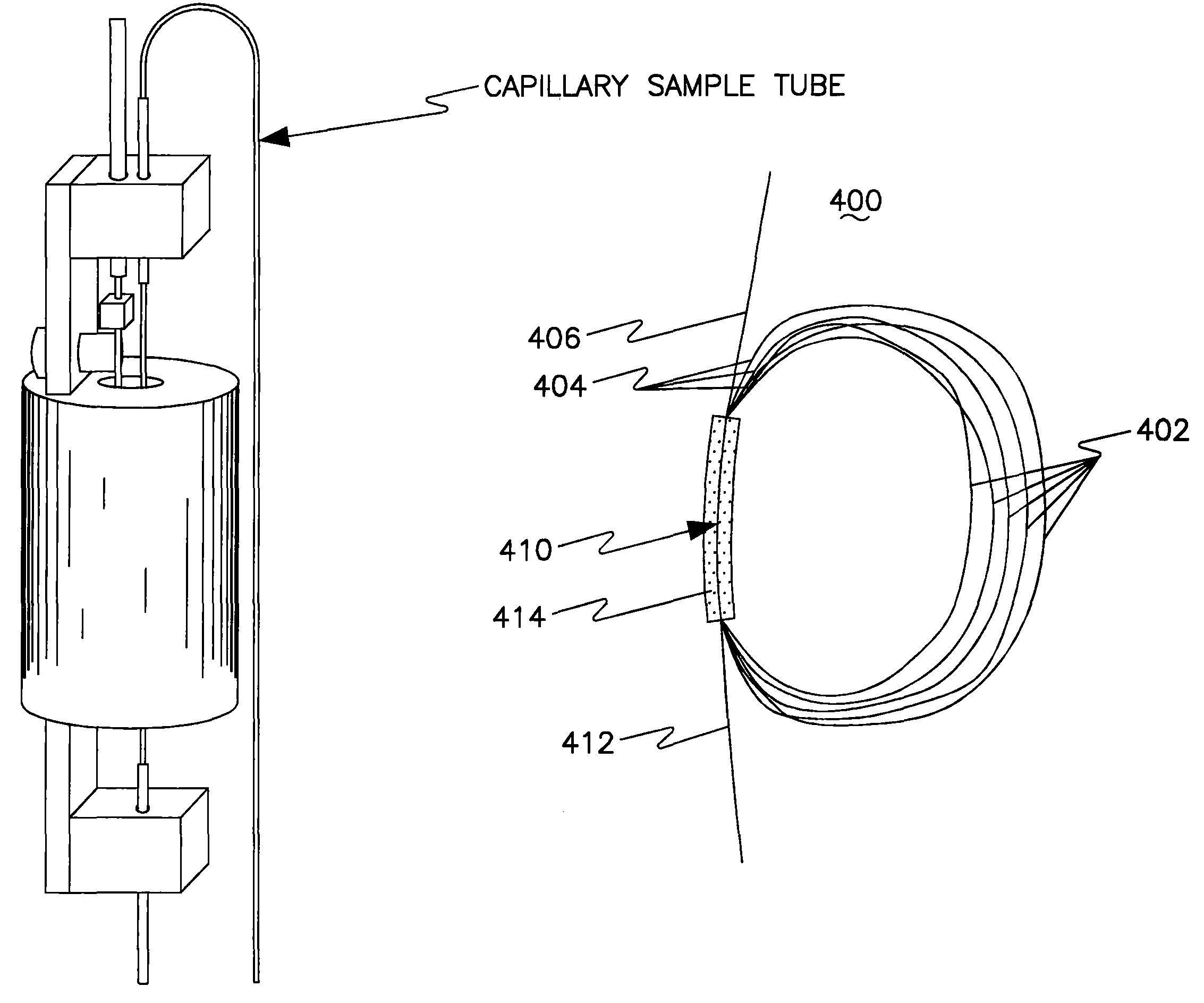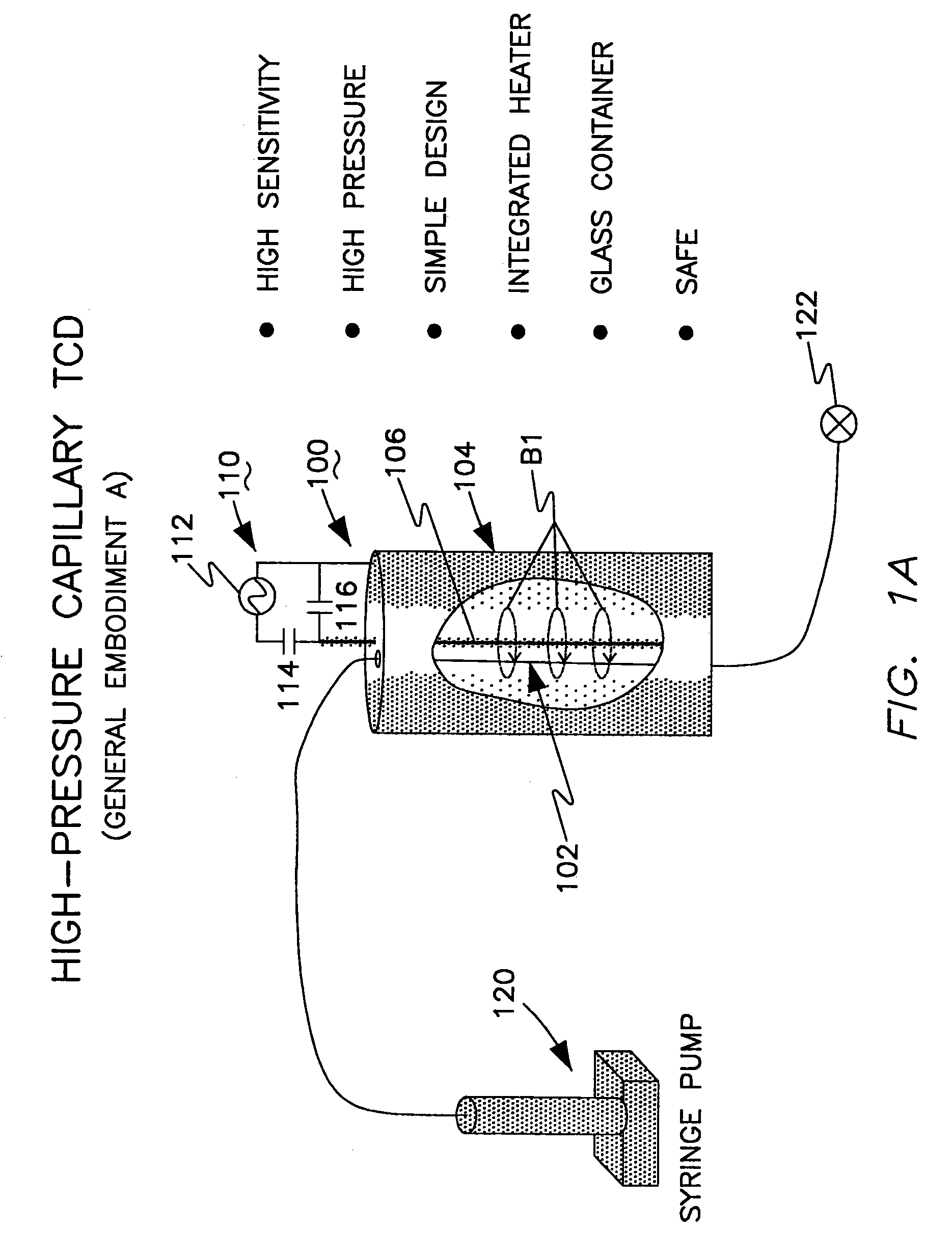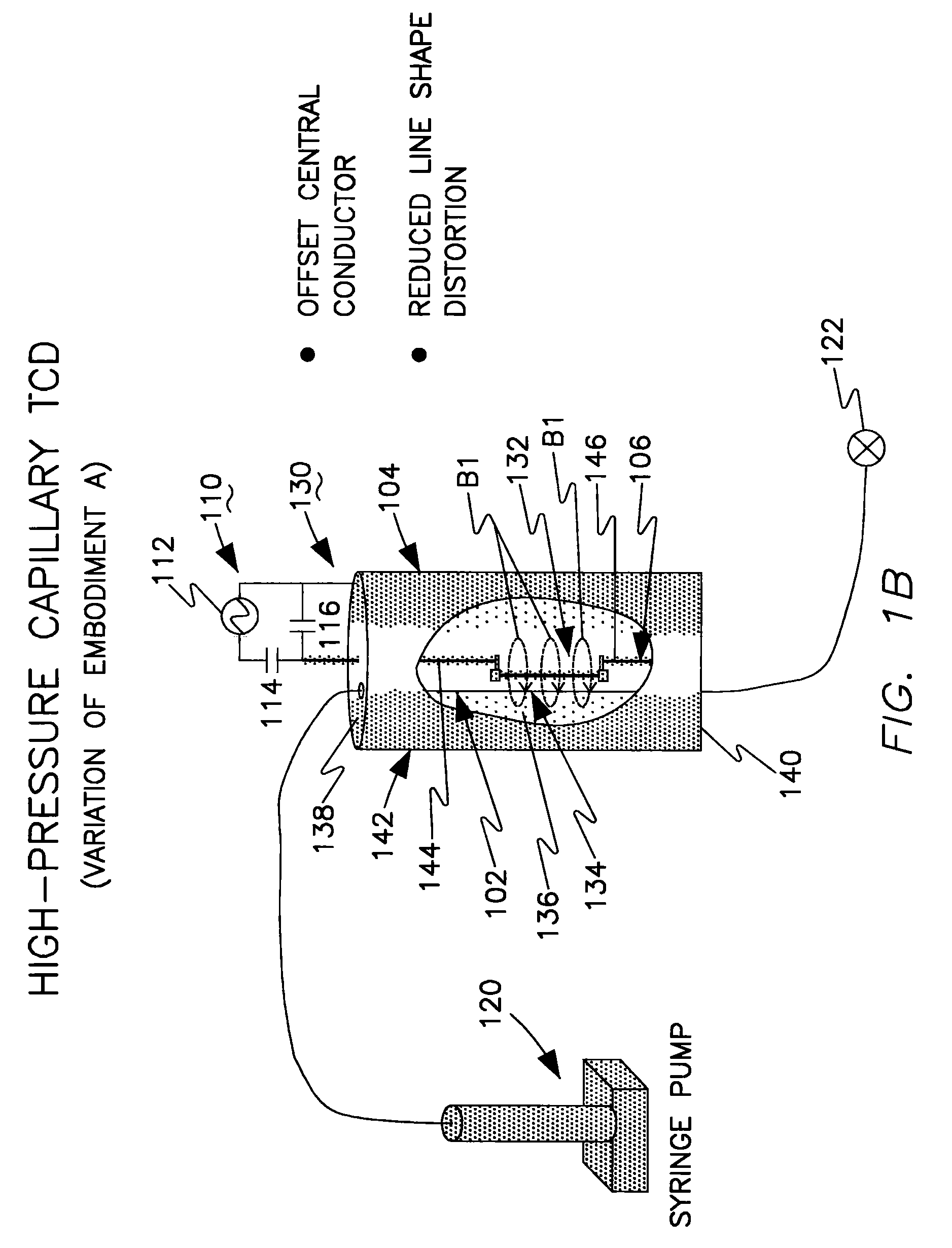Capillary toroid cavity detector for high pressure NMR
a detector and capillary toroid technology, applied in the field of capillary toroid cavity detector for high pressure nmr, can solve the problems of not widely used tcd in the nmr community, other devices cannot operate in the high temperature and pressure range of tcd, and plastics that are not compatible with many solvents and high temperatures, so as to reduce line shape distortion
- Summary
- Abstract
- Description
- Claims
- Application Information
AI Technical Summary
Benefits of technology
Problems solved by technology
Method used
Image
Examples
Embodiment Construction
[0030]In accordance with features of the invention, a capillary TCD of the invention is a simple, inexpensive, and safe device that will allow a broad range of users, particularly in industry, to perform NMR studies of chemical interactions / reactions under conditions of high pressures and high temperatures. Herein, high pressure refers to a pressure from about 5 atmospheres (atm) to about 1500 atm (1.5 kilobars) and preferably a pressure from about 70 atm to about 250 atm. Further, herein high temperatures refer to a temperature range of about 50° C. to about 500° C. and preferably from about 100° C. to about 250° C. With suitable modification, the device of this invention may be used at low temperatures in the range from about −200° C. to about 0° C. and preferably within the range from −100° C. to 0° C. The device may also be used in the range from 0° C. to about 50° C. In addition, for standard NMR analyses under ambient conditions, the capillary TCD probe offers high sample thro...
PUM
 Login to View More
Login to View More Abstract
Description
Claims
Application Information
 Login to View More
Login to View More - R&D
- Intellectual Property
- Life Sciences
- Materials
- Tech Scout
- Unparalleled Data Quality
- Higher Quality Content
- 60% Fewer Hallucinations
Browse by: Latest US Patents, China's latest patents, Technical Efficacy Thesaurus, Application Domain, Technology Topic, Popular Technical Reports.
© 2025 PatSnap. All rights reserved.Legal|Privacy policy|Modern Slavery Act Transparency Statement|Sitemap|About US| Contact US: help@patsnap.com



